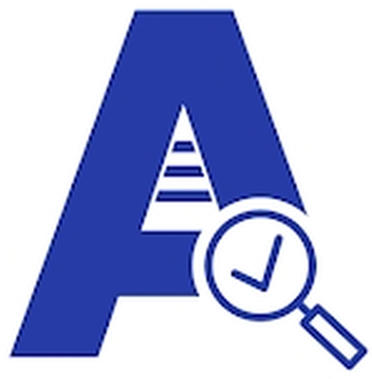ISO 9001:2015 Supplier Audit Checklist – Manufacturing
ISO 9001:2015 Supplier Audit is an international standard that specifies requirements for a quality management system (QMS). For a manufacturing company, auditing suppliers according to ISO 9001:2015 ensures they meet specific criteria regarding quality, process control, risk management, and customer satisfaction.

When using eAuditor Audits & Inspections (a digital inspection tool), you can customize a checklist based on the clauses of ISO 9001:2015 relevant to supplier evaluation. Below is an outline of a Supplier Audit Checklist for a manufacturing organization, structured around the key clauses of ISO 9001:2015.
ISO 9001:2015 Supplier Audit Checklist – Manufacturing
1. Context of the Organization
- 1.1 Understanding the Organization and its Context
☐ Has the supplier identified internal and external issues that affect its ability to meet quality requirements?
☐ Are regular reviews in-place for these issues? - 1.2 Understanding the Needs and Expectations of Interested Parties
☐ Does the supplier understand the needs and expectations of stakeholders (e.g., customers, employees, regulatory bodies)?
☐ Are these needs taken into account in decision-making? - 1.3 Scope of the Quality Management System
☐ Is the supplier’s QMS defined and documented?
☐ Does it include all relevant activities, products, and services?
2. Leadership
- 2.1 Leadership and Commitment
☐ Is there commitment from top management to implementing an effective QMS?
☐ How does management communicate the importance of meeting customer, statutory, and regulatory requirements? - 2.2 Quality Policy
☐ Is there a quality policy?
☐ Does organization understand the quality policy?
3. Planning
- 3.1 Actions to Address Risks and Opportunities
☐ Does the supplier have a process to identify and manage risks and opportunities?
☐ Does supplier take corrective actions in case of non-conformities? - 3.2 Quality Objectives and Planning to Achieve Them
☐ Does supplier establish measurable quality objectives?
☐ Does supplier align these objectives with the overall business strategy?
4. Support
- 4.1 Resources
☐ Are the resources (personnel, equipment, materials) sufficient to meet product requirements?
☐ Does supplier maintain the infrastructure and is it suitable for quality production? - 4.2 Competence and Training
☐ Does the supplier provide relevant training to employees?
☐ Are personnel competent in their roles? - 4.3 Communication
☐ Are there effective communication channels within the supplier’s organization?
☐ Is there communication with customers regarding quality, risks, and product specifications?


5. Operations
- 5.1 Operational Planning and Control
☐ Does the supplier have documented procedures for manufacturing, service provision, and delivery?
☐ Does supplier monitor and control these processes to ensure consistent quality? - 5.2 Control of Externally Provided Processes, Products, and Services
☐ Does the supplier ensure that externally sourced materials or processes meet specified requirements?
☐ Is there a supplier evaluation and monitoring process? - 5.3 Production and Service Provision
☐ Are there work instructions, flow charts, and other documents to guide production?
☐ Does supplier maintain machines and tools to prevent deviations from quality standards? - 5.4 Identification and Traceability
☐ Does the supplier have a system for identifying and tracing products throughout the production process? - 5.5 Nonconformity Control
☐ Does supplier identify and control nonconforming products to prevent unintended use or delivery?
☐ Does supplier record and analyze corrective actions?
6. Performance Evaluation
- 6.1 Monitoring and Measurement
☐ Does the supplier have a process to monitor product quality?
☐ Does supplier maintain inspection records? - 6.2 Internal Audits
☐ Does supplier conduct internal audits at planned intervals?
☐ Does supplier use findings from audits to improve processes? - 6.3 Customer Satisfaction
☐ Does the supplier measure customer satisfaction?
☐ Does supplier have process to handle and resolve customer complaints?
7. Improvement
- 7.1 Continual Improvement
☐ Does the supplier have a process for continual improvement of the QMS?
☐ Does supplier take actions based on feedback, audits, and performance evaluations? - 7.2 Corrective Actions
☐ Does supplier implement corrective actions upon identification of nonconformities?
☐ Does supplier document and monitor corrective actions for effectiveness?
Instructions for ISO 9001:2015 Supplier Audit in eAuditor Audits & Inspections:
- Create Checklist: In eAuditor Audits & Inspections, create a new audit ISO 9001:2015 Supplier Audit form or use existing ISO 9001:2015 Supplier Audit from the public library and add each section as a category.
- Add Response Options: Use checkboxes, yes/no questions, text input, and file attachments (e.g., for evidence or supporting documents).
- Assign Scores or Weightage: Optionally, assign scoring to each section to prioritize critical areas.
- Real-time Monitoring: Take advantage of eAuditor Audits & Inspection’s mobile functionality for onsite audits, and use its reporting features to generate summaries and track supplier performance over time.


ISO 9001:2015 Supplier Audit checklist is a guideline and can be customized based on specific needs, processes, or additional requirements of your organization or industry. It ensures that suppliers are aligned with your quality management goals, reducing risks and enhancing overall product quality.
